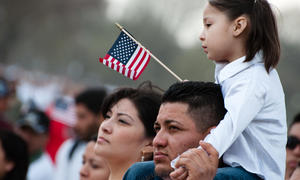text
Informational
Civil Rights March in Selma
This news segment from 2000 recalls the march that took place in Selma, Ala. on March 7, 1965. This day, known as Bloody Sunday, was marked by violent attacks by state and local police upon protesters as they reached the end of Selma’s Edmund Pettus Bridge.
July 2, 2014


